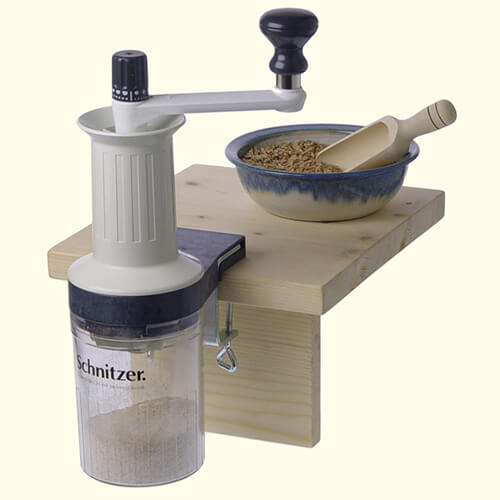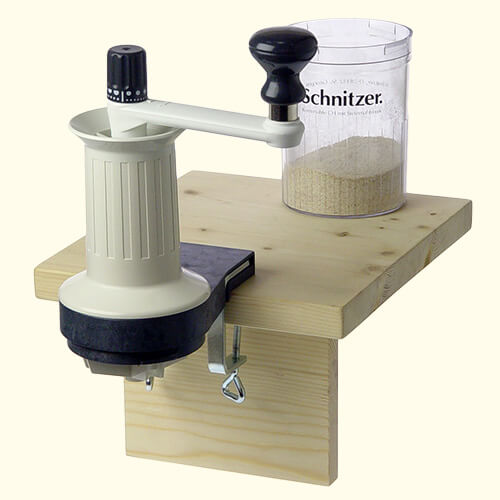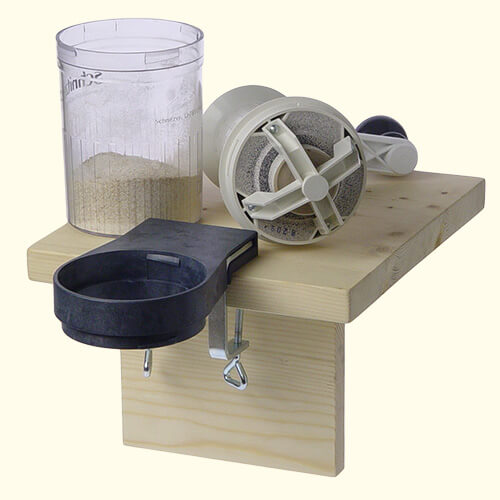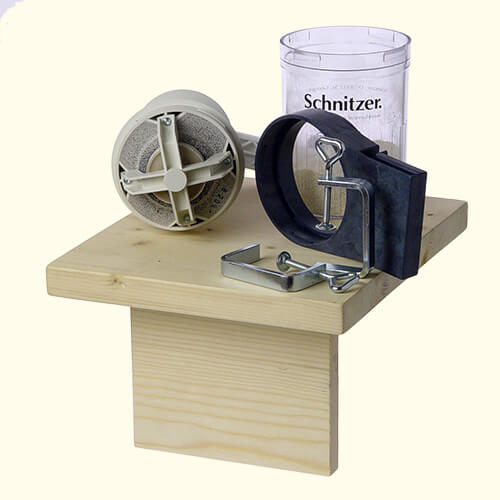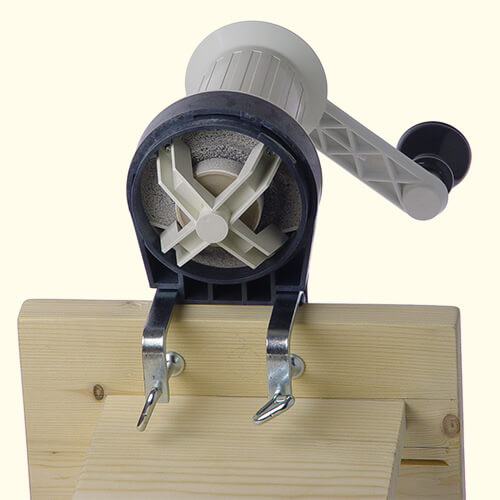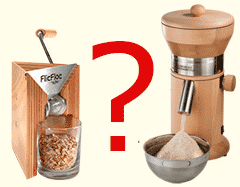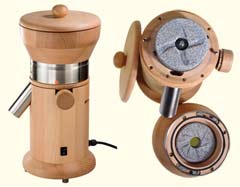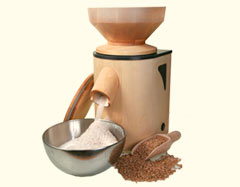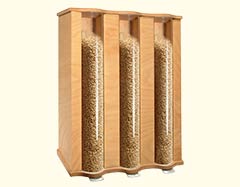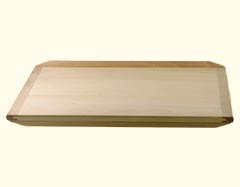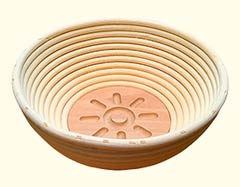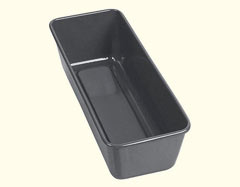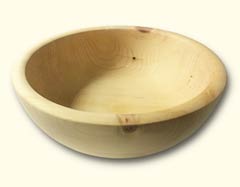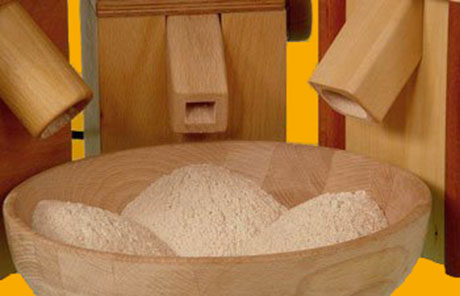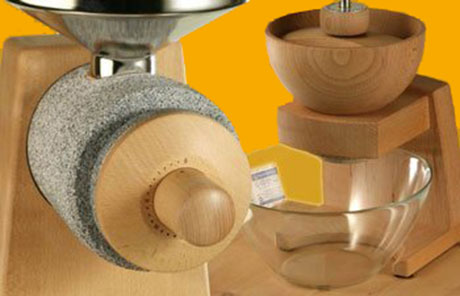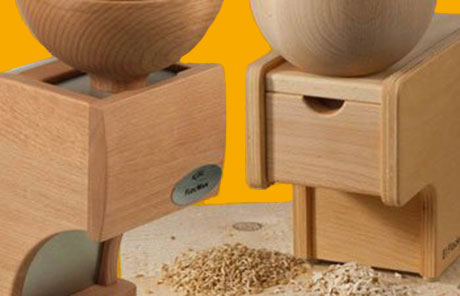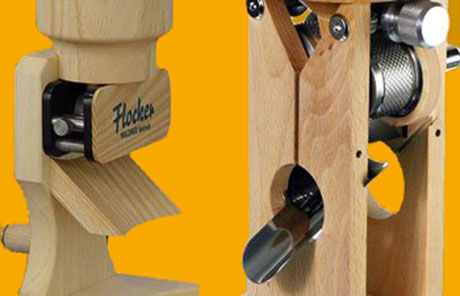Schnitzer Hand Grain Mill CH
"CH" Hand Grain Mill Info
Grist and grinding capacity
The CH is suitable for grinding all cereals of wheat grain size and smaller. For milling, always use dry grain that has been stored in air-permeable packaging (paper, jute or linen bag, etc.). Seeds containing oil, nuts, etc. cannot be ground, as this would cause the grindstones to stick together. The grinding capacity at 80 revolutions is 30 g/min fine and 60 g/min coarse.
The most important parts
Crank, scale head, flour container, grain container
Commissioning and operation
Clamp the table attachment to a table edge and attach the flour container to it from below and the grain container to it from above.
- Pour the grain into the hopper opening and turn the crank in the direction of the arrow.
- The grain mill is set ready for operation and adjusted so that it grinds the finest possible flour when the marks on the scale head and the crank match. The degree of fineness can be continuously adjusted between very fine and coarse by means of the scale head. Turning the scale head to the left makes the grind coarser, turning it to the right makes it finer. When adjusting the fineness, make sure that this only happens when the mill is empty or in small steps by turning the crank several times.
- The ground grain collects in the flour container, which can be removed by a short turn to the left.
Re-adjusting the fineness
If, after prolonged use, the finest possible grinding result is no longer achieved with the fine setting, the fineness level can be corrected.
- Turn the scale head to the right until the grindstones rub against each other slightly when turned but do not yet bloc. You can grind fine flour at this setting.
- Now fix the fine setting. To do this, pull off the cap of the scale head with a strong jerk and put it back on the adjusting nut so that the marking on the cap matches the crank.
Special feature
This model is particularly practical because the collection container for the flour is also suitable for soaking or arranging muesli.
